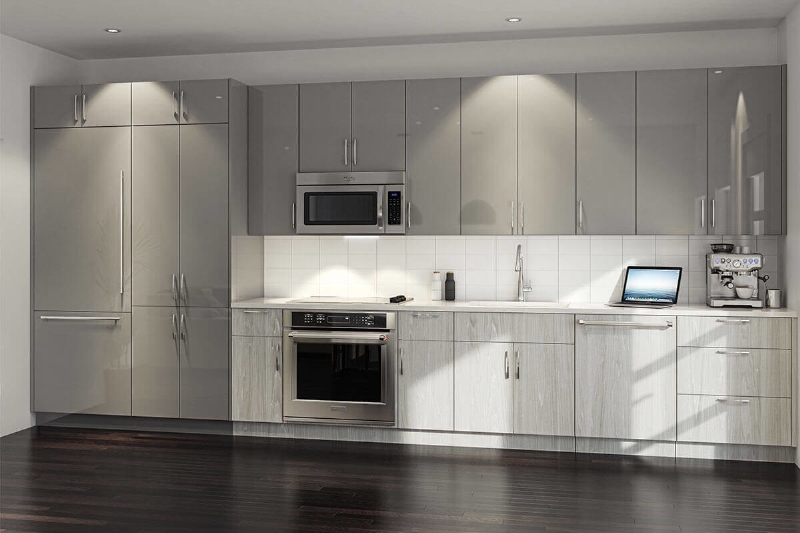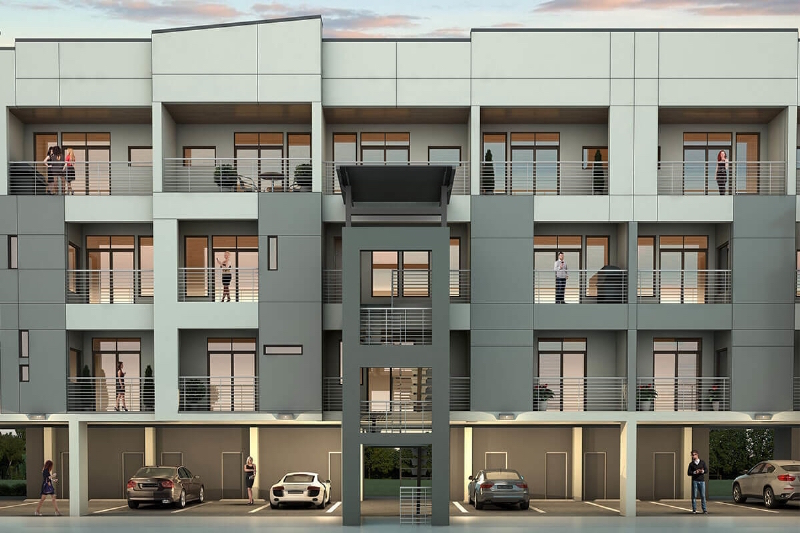The idea of micro condominiums, condos that are under 500 sf in size, is not new in densely populated cities such as New York or Tokyo, where sub-500-sf homes are not created to be hip and trendy, but, instead, are created out of necessity.
And while a city like Houston, and its population of just under 2.2 million certainly doesn’t categorize it as small, it also doesn’t make it a very dense city, either, especially when you take into account it is spread across 599.6 square miles (making it the ninth largest U.S. city by land area, ahead of New York, Los Angeles, and Chicago).
And yet, new home developer and builder Surge Homes has just announced its plans to deliver the first micro condos in Houston in 2017. The Hadley Building, part of the Parc at Midtown development, will include 14 micro condos among its total of 28 homes. The $21.6 million, 80-home community, Parc at Midtown, will mark the first Houston development with micro condos available for ownership.
All of the floor plans for Surge Homes’ micro condos will range from 414 sf to 498 sf. Although small, each condo will feature a closed master bedroom, space for entertaining in the living areas, and windows on the front and back exterior walls, providing a wealth of natural light.
While Houston may not be in need of micro condos, market research collected by Surge Homes of nearly 3,400 Houstonians gave some insight into the growing demand among Houston residents for these tiny homes. By being the first developer in Houston to offer micro condos, Surge Homes hopes to parlay its forward-thinking bet on these European-inspired floor plans into increased sales.
And they may already be seeing the payoff. The Parc at Midtown development, which features more traditionally sized homes, as well, has sold 55 percent of its homes in 120 days, making it the third fastest-selling residential subdivision in Houston for the first quarter of 2016, according to Meyers Research LLC.
 A typical Hadley Building condominium kitchen featuring optional integrated refrigerator. Image: PRNewsFoto/Surge Homes
A typical Hadley Building condominium kitchen featuring optional integrated refrigerator. Image: PRNewsFoto/Surge Homes
Related Stories
MFPRO+ New Projects | Oct 30, 2024
BIG’s One High Line finally reaches completion in New York City’s West Chelsea neighborhood
One High Line, a luxury residential project spanning a full city block in New York’s West Chelsea neighborhood, reached completion this summer following years of delays related to investor lawsuits.
MFPRO+ New Projects | Oct 30, 2024
Luxury waterfront tower in Brooklyn features East River and Manhattan skyline views
Leasing recently began for The Dupont, a 41-story luxury rental property along the Brooklyn, N.Y., waterfront. Located within the 22-acre Greenpoint Landing, where it overlooks the newly constructed Newtown Barge Park, the high-rise features East River and Manhattan skyline views along with 20,000 sf of indoor and outdoor communal space.
Multifamily Housing | Oct 28, 2024
A case for mid-rise: How multifamily housing can reshape our cities
Often referred to as “five-over-ones,” the mid-rise apartment type is typically comprised of five stories of apartments on top of a concrete “podium” of ground-floor retail. The main criticism of the “five-over-one” is that they are often too predictable.
Adaptive Reuse | Oct 22, 2024
Adaptive reuse project transforms 1840s-era mill building into rental housing
A recently opened multifamily property in Lawrence, Mass., is an adaptive reuse of an 1840s-era mill building. Stone Mill Lofts is one of the first all-electric mixed-income multifamily properties in Massachusetts. The all-electric building meets ambitious modern energy codes and stringent National Park Service historic preservation guidelines.
MFPRO+ News | Oct 22, 2024
Project financing tempers robust demand for multifamily housing
AEC Giants with multifamily practices report that the sector has been struggling over the past year, despite the high demand for housing, especially affordable products.
Products and Materials | Oct 17, 2024
5 multifamily tech products for your next project
Multifamily housing and technological upgrades go hand-in-hand. From the rise in electric vehicle charging needs to the sophistication of smart home accessories, tech products are abound in the multifamily space.
Codes and Standards | Oct 16, 2024
North Carolina’s code policies likely worsened damage caused by Hurricane Helene
The North Carolina Legislature’s rejection of building code updates likely worsened the damage caused by Hurricane Helene, code experts say. Over the past 15 years, lawmakers rejected limits on construction on steep slopes, which might have reduced the number of homes destroyed by landslides.
MFPRO+ News | Oct 16, 2024
One-third of young adults say hurricanes like Helene and Milton will impact where they choose to live
Nearly one-third of U.S. residents between 18 and 34 years old say they are reconsidering where they want to move after seeing the damage wrought by Hurricane Helene, according to a Redfin report. About 15% of those over age 35 echoed their younger cohort’s sentiment.
Student Housing | Oct 9, 2024
University of Maryland begins work on $148 million graduate student housing development
The University of Maryland, in partnership with Campus Apartments and Mosaic Development Partners, has broken ground on a $148.75 million graduate student housing project on the university’s flagship College Park campus. The project will add 741 beds in 465 fully furnished apartments.
MFPRO+ News | Oct 9, 2024
San Francisco unveils guidelines to streamline office-to-residential conversions
The San Francisco Department of Building Inspection announced a series of new building code guidelines clarifying adaptive reuse code provisions and exceptions for converting office-to-residential buildings. Developed in response to the Commercial to Residential Adaptive Reuse program established in July 2023, the guidelines aim to increase the viability of converting underutilized office buildings into housing by reducing regulatory barriers in specific zoning districts downtown.

















